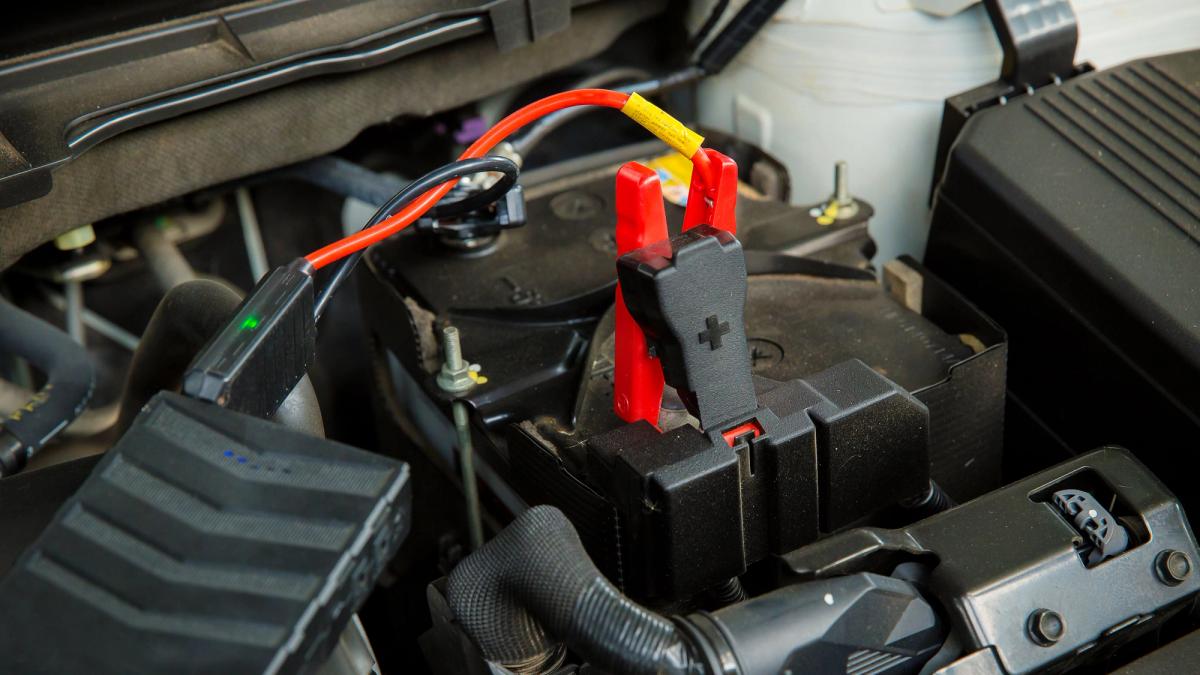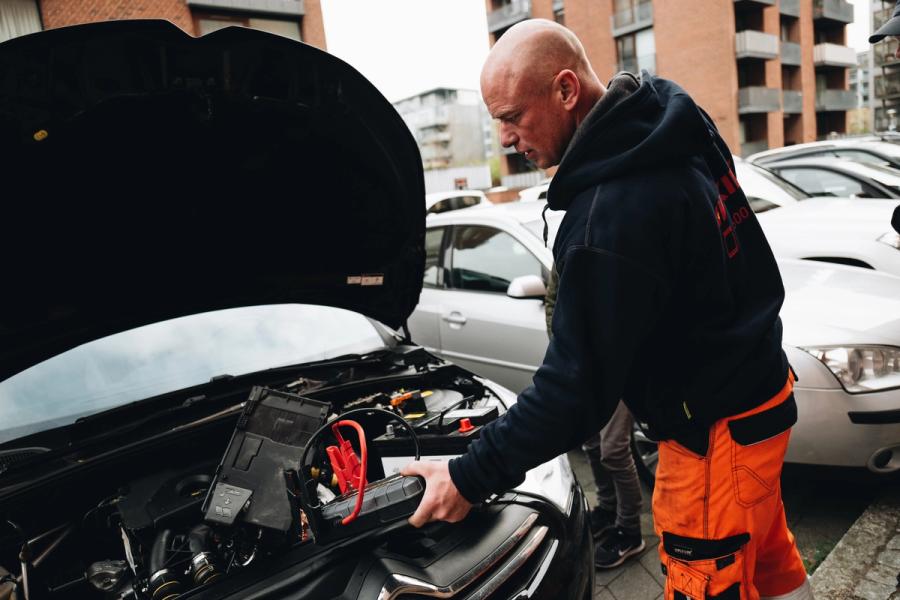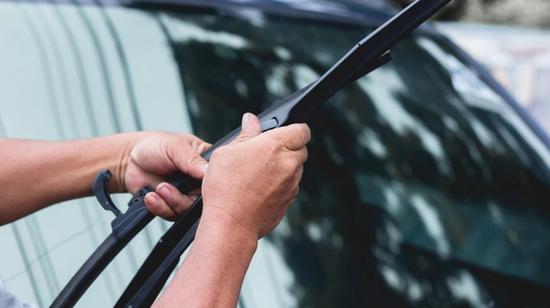Dead car battery? Here’s how to start your car

If your car battery is dead, you can get the car started again using jumper cables and another vehicle, a jump starter, or a battery charger. It’s very important that jump-starting is done in the correct order and the right way.
Incorrect procedures can, in the worst case, cause significant damage to the car’s electronics and even pose an explosion hazard. This is because the sequence in which you attach the jumper cables or jump starter to the car is not arbitrary.
Safety measures
Before jump-starting your car using jumper cables, a jump starter, or a battery charger, we recommend you follow these safety guidelines:
- Read your car’s owner’s manual to ensure that the car can be jump-started using jumper cables.
- Wear rubber gloves and safety goggles when performing a jump start.
- Follow the manufacturer’s instructions for all products.
How to use jumper cables
Modern cars contain a lot of electronics, so using jumper cables is generally not recommended. In an emergency situation, you do what you have to, but it’s often better to call Viking 0100 2424 if one of the cars is newer than about 10 years old. If you still plan to use jumper cables, it’s crucial that you do it correctly.

Starting your car with the starter cables and auxiliary power is a simple process when done correctly.
Starting the car with the starter cables
- Make sure that all electrical systems and equipment (in a car with a flat battery) are switched off.
- Park the vehicle providing power as close as possible to the vehicle being helped (without the cars touching).
- Make sure that the engines of both cars are switched off and the power switches are in the OFF position.
- Check the batteries of both cars for external damage before connecting the starter cables. Do not attempt to start a damaged battery.
- Connect the red jumper cable to the positive (+) terminal of the discharged battery.
- Connect the other end of the red cable to the positive terminal (+) of the battery that is charging.
- Connect the black starter cable to the negative terminal (-) of the battery.
- Attach the other end of the black cable to an unpainted metal part of the engine or body of the vehicle receiving the current, on a part that conducts electricity and is as far away from the battery as possible.
- Start the engine of the vehicle to be powered and let it run for a few minutes.
- Then try to start the powered vehicle. If it won't start after a few tries, the problem may be more serious than a dead battery. In this case, contact Viking on 0100 2424.
- If the car starts, let both vehicles run for about 5 minutes.
- Keep the starter cables connected for a while to allow the voltage difference between the batteries to equalize when the car is started with a flat battery.
- Switch off the engines
- Switch off the cars and disconnect the starter cables in the reverse order to the way you connected them, i.e. disconnect the black cable first and then the red one.
- Once the cables have been disconnected, restart the powered car and drive for about 30 minutes to recharge the battery.
How to use a jump starter
The auxiliary starter acts as an extra battery, which is connected to the discharged battery with two starter cables. It is a safer alternative than traditional starter cables connected to two cars. The auxiliary starter cables are connected directly to the battery terminals, thus avoiding damage to the electronics of the car providing power.
Modern jump starters are relatively small and easy to use, so it is a good idea to keep one in your car, home or cottage.

Here’s how to use a jump starter:
- Check the car’s manual to find the positive and negative terminals.
- Connect the red cable to the positive terminal (+) on the battery.
- Connect the black cable to a bare metal part or the negative terminal (-).
- Then try to start the car.
- Disconnect the jump starter in reverse order.
It's worth bearing in mind that the capacity of the booster is limited, so once it has been used, it needs to be recharged before the next use. An empty jump starter is no good when the need arises.
Summary
When using jumper cables, jump starters or battery chargers, there are a few things to keep in mind:
- Avoid using starter cables in newer cars.
- Read and follow the car manufacturer's manual.
- Use of an auxiliary starter is always a safer option than using jumper cables.
- Always connect the cables in the correct order.
- Call Viking on 0100 2424 if you are not sure of the order. We will come to your aid quickly!
- Avoid starting problems with proper battery maintenance. Read our article on battery maintenance and tips to prevent battery drain.
- If your car battery has completely run out of power, you may need to replace it with a new one.
If you're not entirely sure how to jump-start your car, we recommend calling in a professional. A professional jump-start is always cheaper than the cost of repairing an incorrectly administered jump-start, and may even be covered by your car insurance.


